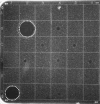Extensive in vivo human milk peptidomics reveals specific proteolysis yielding protective antimicrobial peptides
- PMID: 23586814
- PMCID: PMC3662810
- DOI: 10.1021/pr400212z
Extensive in vivo human milk peptidomics reveals specific proteolysis yielding protective antimicrobial peptides
Abstract
Milk is traditionally considered an ideal source of the basic elemental nutrients required by infants. More detailed examination is revealing that milk represents a more functional ensemble of components with benefits to both infants and mothers. A comprehensive peptidomics method was developed and used to analyze human milk yielding an extensive array of protein products present in the fluid. Over 300 milk peptides were identified originating from major and many minor protein components of milk. As expected, the majority of peptides derived from β-casein, however no peptide fragments from the major milk proteins lactoferrin, α-lactalbumin, and secretory immunoglobulin A were identified. Proteolysis in the mammary gland is selective-released peptides were drawn only from specific proteins and typically from only select parts of the parent sequence. A large number of the peptides showed significant sequence overlap with peptides with known antimicrobial or immunomodulatory functions. Antibacterial assays showed the milk peptide mixtures inhibited the growth of Escherichia coli and Staphylococcus aureus . The predigestion of milk proteins and the consequent release of antibacterial peptides may provide a selective advantage through evolution by protecting both the mother's mammary gland and her nursing offspring from infection.
Figures






References
-
- Oftedal OT. The mammary gland and its origin during synapsid evolution. J. Mammary Gland Biol. Neoplasia. 2002;7:225–252. - PubMed
-
- Migliore-Samour D, Floch F, Jollès P. Biologically-active casein peptides implicated in immunomodulation. J. Dairy Res. 1989;56:357–362. - PubMed
-
- Jørgensen ALW, Juul - Madsen HR, Stagsted J. Colostrum and bioactive, colostral peptides differentially modulate the innate immune response of intestinal epithelial cells. J. Pept. Sci. 2010;16:21–30. - PubMed
Publication types
MeSH terms
Substances
Grants and funding
LinkOut - more resources
Full Text Sources
Other Literature Sources
Medical
Research Materials

